There can be confusion among those who are new to so-called ‘conspiracy theory’ about the term ‘false flag.’ This is due largely to a concerted disinformation campaigns by the mainstream media (MSM) who try to pretend there is no evidence that hoaxed or false flag attacks occur. This view is historically illiterate. However, suggesting an attack was a ‘false flag’ is not necessarily to equate it with a ‘hoax.’
Another sticking point for people trying to understand false-flag terrorism is the erroneous belief that thousands of people would need to be involved for it to work. this is not the case.
Centralised, hierarchical compartmentalisation is used in many large organisations. Individuals within the organisation obey authority and authority increases with rank. With greater rank and authority comes increased knowledge of how compartmental efforts cooperate to achieve organisational goals. A few people with sufficient authority have a comprehensive understanding of the overall organisational structure and its objectives, but most people working toward those goals don’t.
For example, the Manhattan Project involved an estimated 130,000 people. The compartmentalised hierarchy was so tight, the majority of individuals involved had no idea what they were collectively trying to achieve. They simply obeyed authority and worked on a “need to know” basis.
Not everyone with high rank necessarily “needs to know” either. In 1943, the US Senate Special Committee to Investigate the National Defense Program was led by then Senator Harry S. Truman. When this powerful government investigatory committee enquired about suspicious activity at a plant in Minneapolis—which was linked to the Manhattan Project—any further investigation was shut down by then secretary of war Harry Stimson, who told Truman to desist.
It is entirely possible that a few well placed individuals within the establishment can, for example, manipulate intelligence analysis or influence “counter-terrorism” operations to control terrorist attacks or the response to them. The complicity of a large number of people is not necessary. Obedience to authority is required.
A hoaxed “false-flag” attack is one where the event itself didn’t happen. They are either pure theater and the images we see of supposed victims are of people faking injuries or they are simply stories that relate to an event that never actually occurred. There are numerous agencies who specialise in creating fake terrorist attacks and other mass casualty situations. They offer their skills to the military, government agencies and emergency services who need to add realism to their training exercises. For example, CrisisCast are a UK based firm specialising in the simulation of large scale emergencies. With clients including the UK Home Office and the private security firm G4S, among others, their website states:
We dramatise events for emerging security needs in the UK, Middle East and worldwide. Our specialist role play actors – many with security clearance – are trained by behavioural psychologists and rigorously rehearsed in criminal and victim behaviour to help police, the army and the emergency services, hospitals, schools, local authorities, government, private security firms, shopping centers, airports, big business, criminal justice departments, media and the military to simulate incident environments for life saving procedures. We use state of the art British film industry techniques, props and special effects to help trainers deliver essential, hands-on, high octane crisis response and disaster management training. We also work with trainee doctors, psychologists and care professionals.
For example, the video below shows footage of crisis actors in action in Iraq:

This in no way suggests that CrisisCast have ever been involved in any suspected false flag or hoaxed attack in the Middle East or elsewhere. However, companies like CrisisCast exist. The rolling of the eyes whenever conspiracy theorists mention the possible use of ‘crisis actors,’ which CrisisCast refer to as “specialist role play actors,” only demonstrates ignorance of the fact. Hoaxes have been used recently to promote calls for war. For example the BBC apparently hoaxed an alleged attack by the Syrian Arab Army attack, supposedly on a school playground in Atareb district of Aleppo, in their fake news story Saving Syria’s Children.

Sadly hoaxes have led to truly monumental loss of life. On August 4th 1964 the U.S. destroyer, U.S.S Maddox and her escort, the U.S.S Turner Joy, were apparently attacked by North Vietnamese Navy (NVN) motor torpedo boats. Both ships returned fire and jets were dispatched to respond. However the jets found no evidence of any NVN boats. Captain Herrick, of the Maddox, questioned the attack within 24hrs. He was not sure his instrument readings were correct. He sent a cable stating:
Review of action makes many reported contacts and torpedoes fired appear doubtful. Freak weather effects on radar and overeager sonarmen may have accounted for many reports. No actual visual sightings by Maddox. Suggest complete evaluation before any further action taken.
Captain Herrick made the mistake abundantly clear to his superiors straight away. There was no evidence the sonar readings were falsified, it seems they were simply the result of human error under difficult circumstances in very heavy seas. However, from that point forward the entire story was pure fabrication. What is known is that his communications were ignored and mythical ‘intelligence’ reports were created to falsely claim the attack had occurred.
The U.S National Security Agency (NSA) released documents in 2005 which revealed the extent of the deception. The signal intelligence (SIGINT,) recording intercepted Vietnamese communications, was ‘doctored’ to substantiate the attack. Firstly approximately 90% of the relevant SIGINT was withheld. Unrelated SIGINT reports were inserted into the NSA summary of the Tonkin incident to support the assertion that an attack occurred. Vital communication intercepts were deliberately mistranslated and other NVN communications were taken out of context, then spliced together, before being reinserted into the report to create the hoaxed ‘event.’
Three days later, in response to these ‘unprovoked attacks,’ the U.S. Congress passed the ‘Gulf of Tonkin Resolution,’ which empowered President Lyndon Johnson to take all measures he deemed necessary to repel aggression. This allowed the administration to escalate military action, leading to Operation Thunder and the start of a full scale war that killed more than three million people. The Vietnam War started with a hoax we now call the Gulf of Tonkin Incident.
‘False flag’ attacks, unlike hoaxed events, are absolutely real. People die and suffer terrible injuries. Broadly they take two forms. Either elements within the government or intelligence agencies take active measures to ensure an attack occurs, often called LIHOP (‘let it happen on purpose’) or they deliberately promote an enemy attack, often by using foreign operatives as proxies or by supporting, training and equipping genuine attackers. This is sometimes referred to as MIHOP (‘make it happen on purpose.’) When MIHOP ‘terrorist’ attacks take place these can be considered acts of ‘sponsored false flag terrorism.’ However, false flag attacks are not necessarily terrorist related and can also be pure military operations, unrelated to terrorism.
False Flag attacks are designed to cause devastation that can then be blamed upon a chosen enemy. The purpose is invariably to achieve a geopolitical, policy or military objectives. Commonly they are undertaken to illicit support for further military action against the ‘aggressor’ who supposedly committed the atrocity. 9/11 is a prime example.
Many find it beyond imagination to believe that our ‘side’ would ever kill its own people simply to further a geopolitical objective. However, examples of the use of ‘false flag’ attacks, for precisely those reasons, are historical fact. Their strategic purpose is well-known and the evidence is unequivocal. State operatives frequently kill their own if it serves the given agenda. The reason most people can’t contemplate the possibility is often due to cognitive dissonance. Some research into their historical use can be the first step towards overcoming this psychological hurdle.
The origin of the term ‘false flag’ (or ‘false colours’) stems from the privateer naval warfare practice of flying ‘friendly’ flags in order to approach an unsuspecting target vessel. Once within range the ‘false flag’ would be lowered and the unprepared enemy attacked under the aggressors ‘true colours.’ Since then, the term has come to mean the strategic manipulation of an event to provide justification for further action.
During the 1780s King Gustav III of Sweden was looking for a way to unite his kingdom and thought war with Russia would be the way to do it. So he employed tailors from the Swedish Opera House to make some Russian uniforms, dressed his troops up and launched an attack against Sweden’s own border post at Puumala. Thereby creating the political will to launch the Swedish-Russian War (1788-1790.)
In 1914, President Woodrow Wilson declared U.S. neutrality. However, the New World Order (NWO) had already seized control of the economy through the Federal Reserve Act, a year earlier, in preparation for the war. J.P.Morgan made £2.3 billion (an astronomical sum in 1913) in loans to the Allied Nations of Britain, France and Russia. The banking cartel, who owned the Fed, were heavily invested in the project to seize German power. These loans then enabled the Allied Nations to buy arms and military equipment from U.S. weapons manufacturers for corporate war profits.
Despite their immense wealth, the U.S. financial elite couldn’t risk a German victory. U.S. entry into the war was required. The NWO also had plans to capitalise on social and political changes sweeping through Russia. As Russia were a vital ally, destabilising Russia in the short term made U.S. entry into the war even more vital. The will of the U.S. people needed to be changed.
In Britain the First Lord of the Admiralty Winston Churchill (Pilgrims Society member) was keen to facilitate U.S. entry into the war. Britain immediately created a naval blockade of Germany, capitalising on its naval dominance and heavily mining the North Sea. Unable to compete in conventional naval warfare Germany retaliated using submarines, the infamous U-Boats. Initially Germany obeyed the ‘Cruiser Rules‘ when attacking merchant supply vessels. They would surface, alerting the crew, allowing them time to deploy life boats, before sinking the vessel.
However, Churchill abandoned this principle by creating ‘Q-Ships.’ These were secretly armed merchant ships which destroyed a number of U-Boats before the Germans could adapt to the new tactics. The Germans declared a war zone around the British isles and stated that all shipping was liable to attack. This was a deliberate trap engineered by Churchill to imperil all shipping, especially U.S. vessels, in an attempt to draw the U.S. into the war. He wrote to Walter Runciman, President of the Board of Trade, that it was:
[. . .] most important to attract neutral shipping to our shores, in the hope especially of embroiling the United States with Germany.
However, wary of U.S. involvement, the Germans took great care to avoid sinking U.S. shipping. Woodrow Wilson’s Ambassador to Britain was Walter Hines Page, a close friend and associate of leading New World Order operative Sir Edward Grey. Page received payment (a private annual stipend of $25,000) from the U.S. arms manufacturer Cleveland Dodge, war was in his personal best interests. On May 2nd 1915 Page wrote to his son.
If a British liner full of American passengers be blown up, what will Uncle Sam do? That’s what’s going to happen.
Wilson’s also sent his friend and closest adviser Edward Mandell House (a banking cartel spokesman) as his emissary to Britain. On the morning of the 7th May 1915 House met with Sir Edward Grey. Later House wrote his recollection of the conversation.
We spoke of the probability of an ocean liner being sunk, and I told him if this were done, a flame of indignation would sweep across America, which would in itself probably carry us into the war.
Later that same day, Grey and House met with King George V at Buckingham Palace. In House’s official biography ‘The Intimate Papers of Colonel House‘ he also revealed his account of that discussion.
We fell to talking, strangely enough, of the probability of Germany sinking a trans-Atlantic liner. [. . .] He [the king] said, ‘Suppose they should sink the Lusitania, with American passengers on board?
The Lusitania set sail from New York on May 1st 1915, carrying 694 crew members and 1,265 passengers bound for Liverpool. In addition, the ship carried a huge cargo of munitions and explosives. This habit of placing war supplies on passenger liners had prompted the previous captain, Daniel Dow, to resign in protest. She was captained by his replacement, Captain William Turner.
The German’s were fully aware of her cargo and could not allow her to reach British shores. The Imperial German Embassy in the U.S. posted adverts in the major newspapers stating the Lusitania would be attacked and that passengers should not board her for the transatlantic crossing.
The British had already cracked the German encryption codes and could monitor their transmissions. While technology of the day didn’t allow pin-point location of submarines, the British knew the identity and general movements of the various patrolling U-Boats. They were fully aware of the presence of U-20, which had already sunk a number of vessels, as the Lusitania sailed into the Irish Sea on Friday, 7th May 1915.
To protect supply vessels, the British usually escorted the more vulnerable merchant ships through dangerous waters. Four destroyers were moored in Milford Haven but were not tasked to escort the Lusitania, in contravention of standard practice. Following protocol, the Royal Navy dispatched HMS Juno to rendezvous with the Lusitania before she entered the deadly Irish Sea. Despite British Admiralty certainty that U-20 was lurking, when the admiralty discovered HMS Juno’s sailing it was ordered to return to port.
Vice-Admiral Henry Coke, commanding defences from his Queenstown headquarters in Ireland, requested permission to reroute the Lusitania to avoid the danger but received no confirmation from the Admiralty. U-20 torpedoed the Lusitania causing an initial explosion which then ignited a much larger detonations of the explosives packed in her hold. 1,198 people died including 128 U.S. citizens. This was effectively a sponsored false flag attack.
While the German navy was undoubtedly responsible, every effort was made by Britain and powerful financiers in the U.S. to allow it to happen (LIHOP). The Lusitania was owned by J.P.Morgan.
The Mukden Incident in 1931 occurred when Japanese soldier Lt. Suemori Kawamoto planted a bomb along Japan’s South Manchurian Railway. The explosion was blamed upon Chinese dissidents and Japan used it as a pretext to invade China’s north-eastern province of Manchuria.
In 1939, Heinrich Himmler masterminded a plan that involved a false flag attack upon the German radio station Sender Gleiwitz. German operatives were dressed in Polish uniforms and the attack provided a justification for the German invasion of Poland and subsequently WWII.
Similarly, the Lavon Affair, in 1954, involved Israel’s use of Egyptian, Jewish operatives to plant bombs in American and British cinemas, libraries and other civilian targets. The attacks were then blamed upon the ‘Muslim Brotherhood’ with the objective of convincing Western powers to retain their military presence in defence of the Suez canal.
The tactical use of false flag attacks was discussed at some length in the U.S. Joint Chiefs of Staff’s 1962 document relating to Operation Northwoods. A variety of options were advocated. The objective was to launch a false flag attack against U.S. targets, placing the blame on Cuba, in order to provide a justification for its invasion. For example, the Joint Chiefs of Staff made the following recommendations:
– We could blow up a U.S. ship in Guantanamo Bay and blame it on Cuba.
– We could create a Communist Cuban terror campaign in the Miami area, in other Florida cities and even in Washington.
– We could sink a boatload of Cubans en-route to Florida (real or simulated).
– It is possible to create an incident which will demonstrate convincingly that a Cuban aircraft has attacked and shot down a chartered civil airliner.
– Casualty lists in U.S. newspapers would cause a helpful wave of national indignation
President Kennedy wasn’t impressed and rejected the idea a year before his assassination. General Lyman Lemnitzer, who approved Operation Northwoods, was the Supreme Allied Commander of NATO in Europe who, in the 1960’s, oversaw Operation Gladio which perpetrated hundreds of false flag terrorist attacks across Europe and Turkey for more than 40 years.
The Gladio attacks were frequently perpetrated by sponsored far-right terrorist groups but attributed to far-left terrorists. This was done in an effort to blame the Soviet Union for supporting these far-left terrorist organisations, such as the Red Brigade .
In 1999, 293 people were killed in a series of apartment block bombings in Russia. These were blamed upon Chechen terrorists. Following public reports of suspicious activity in a tower block in the city of Ryazan, a huge bomb made from the military explosive RDX (Hexogen) was discovered and disarmed. When the suspected terrorists were apprehended, they turned out to be Russian FSB agents.
Subsequent investigations showed the bomb they planted was identical to those supposedly used by the Chechen terrorists in the other apartment bombings. The bombings caused widespread fear and panic amongst Russian voters. Coincidentally, in the midst of the crisis, former FSB director Vladimir Putin came to power promising strong leadership in the fight against the Chechen terrorists.
However, the tactical use of false flag attacks aren’t merely a matter of historical record. They continue to this day, as much more recent events show. We have already discussed LIHOP (let it happen on purpose) and MIHOP (make it happen on purpose) but the manipulation required to carry out these operations often comes through the use of infiltration.
During ‘the troubles’ in Northern Ireland, that saw decades of deadly terrorist attacks in Ireland, Northern Ireland and on the British mainland, both Republican and Loyalist paramilitary groups were extensively infiltrated by the British security services. Following the terrorist murder of Patrick Finucane in 1989, it became clear that one of the men involved was a Royal Ulster Constabulary (RUC) special branch agent called William Stobie. Subsequent concerns about the extent to which British agents were involved in acts of terrorism led to the Stevens Inquiry.
After a 14-year-long investigation, Sir John Stevens released his final recommendations report in 2003. Stevens stated:
I conclude there was collusion in both murders and the circumstances surrounding them. Collusion is evidenced in many ways. This ranges from the wilful failure to keep records, the absence of accountability, the withholding of intelligence and evidence, through to the extreme of agents being involved in murder. [. . .] The unlawful involvement of agents in murder implies that the security forces sanction killings. [. . .] Informants and agents were allowed to operate without effective control and to participate in terrorist crimes.
British agents were acting as terrorists. In another example two British agents were found to have been involved in ‘human bomb’ attacks on three Army Border checkpoints in 1990. The plot involved taking people’s families hostage before forcing them to be unwilling suicide bombers. No security service agents have ever been prosecuted in connection with the bombings.
In recent history, the false flag attack in New York on 11th September 2001 and the London bombings on July 7th 2005 were possibly the most significant events in the propagation of the Anglo-American, so called, ‘war on terror’ which has killed millions in the first two decades of the 21st century. To discover all the evidence which proves these events were false flag attacks is revealed in my book A Dangerous Ideology.
Clearly unhappy with independent inquiries that actually questioned the government, less than two years after the Stevens Inquiry released its findings, the British government enacted the 2005 Inquiries Act. This legislation gave them extensive control over public inquiries. They can deny the submission of evidence, withhold witness statements, and have the power to edit findings before they are released. The British notion of the ‘independent’ public inquiry has been a complete fallacy ever since.
However, the cat was out of the bag in regard to the murder of the lawyer Patrick Finucane. Consequently the De Silva Report clarified the Stevens findings forcing a public apology from then British Prime Minister David Cameron more than 10 years later, in 2015.
Using false flag attacks as tools of foreign policy and military operations continued. In 2005 two British SAS soldiers were captured in the Iraqi city of Basra. They were dressed as terrorists, complete with false beards, and were carrying out a ‘drive-by-shooting’ at market goers.
When the two men, who were part of a larger group, were apprehended by Iraqi police they found explosives, weaponry and further ‘disguises’ in the car. Clearly, had the Iraqi authorities not caught them, the attack would have been chalked up as another act of sectarian ‘terrorism,’ though it was actually another ‘false flag’ attack. The Iraqi’s could probably have learned more had the British army not ripped the police station to bits in an extremely violent prison break that nearly started the ‘civil war’ there and then.
In 2014 the Turkish government banned access to YouTube in their country. A leaked audio recording of a conversation between the Head of Turkish Intelligence Hakan Fidan and the Turkish Foreign Minister Ahmet Davutoğlu was on the site. The men openly discussed a planned false flag attack.
Four men were to be sent from Syria to commit an attack on Turkish soil to provide the justification for Turkey to launch a war against Syria. Turkish officials stated the leaked recording was ‘partially manipulated’ and an attack on Turkish security. There is overwhelming evidence that between 2013 and 2018 a series of false flag attacks passed off as Syrian government chemical weapon atrocities.
These are just a few examples of the many ways false flag attacks have been used to shape history. Far from rare, they appear to be fairly standard operating procedure. There is no evidence to substantiate any claim that a decision has ever been taken to stop using the false flag strategy.



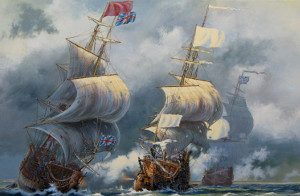
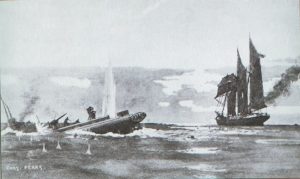


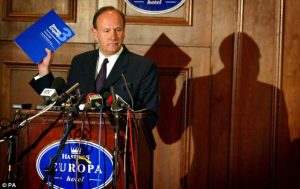
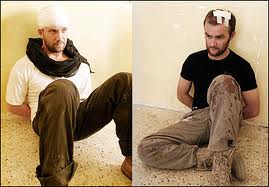

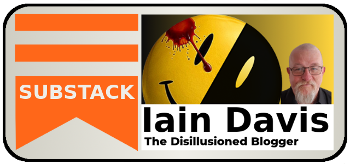


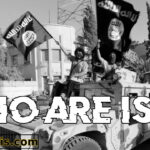


best documentary on 9/11
September 11: The New Pearl Harbor (Full Documentary)
https://www.bitchute.com/video/Lp81hoFneM4z/
(5 hrs, destroys all aspects of official narrative)
Also for more on WW1:
Benjamin H. Freedman’s 1961 Speech At The Willard Hotel
https://www.bitchute.com/video/exi1Ceh2Mam1/
Benjamin Freedman was an insider–he was assistant to Bernard Baruch, who was yesterday’s Soros (front man from Rothschild banking dynasty) and saw the behind-the-scenes intrigues that got America into WW1, which led to the deaths of 116,000 Americans. Freedman says that when Britain was initially losing the war to Germany, the Zionists in Europe went to Britain and said you don’t have to accept the peace deal with Germany, you can still win the war if America joins you, and we will get America into the war if you give us Palestine. So Britain agreed to the deal and gave the Zionists the Balfour Declaration, and then the Zionists surrounding puppet Wilson got America into the war (so 116,000 dead Americans so that they could get Palestine)
Thanks Sandra.